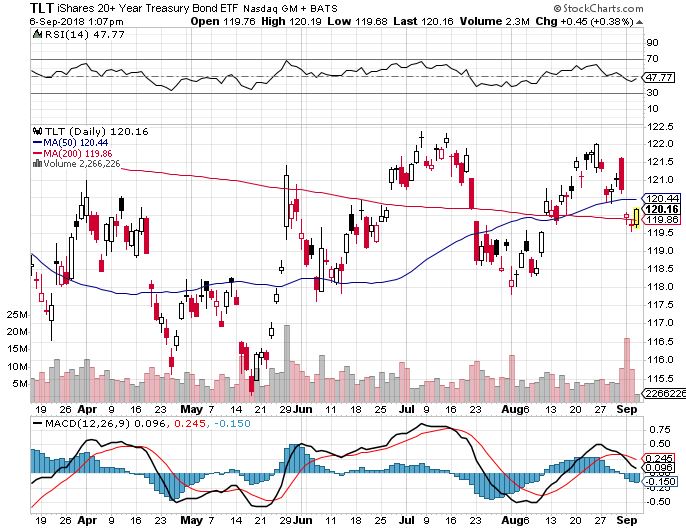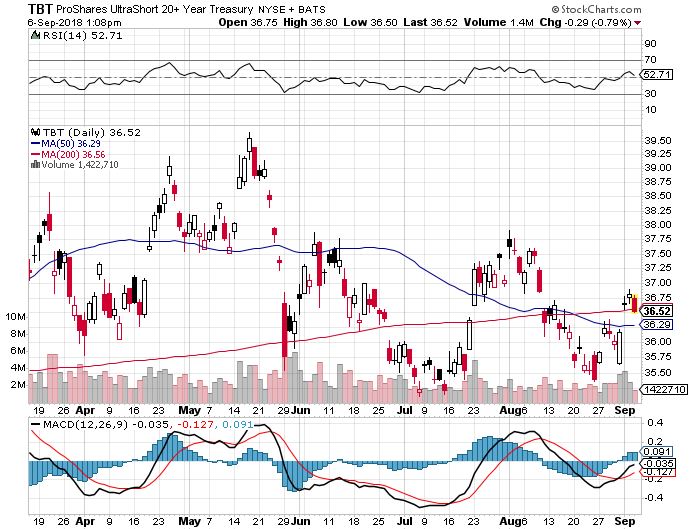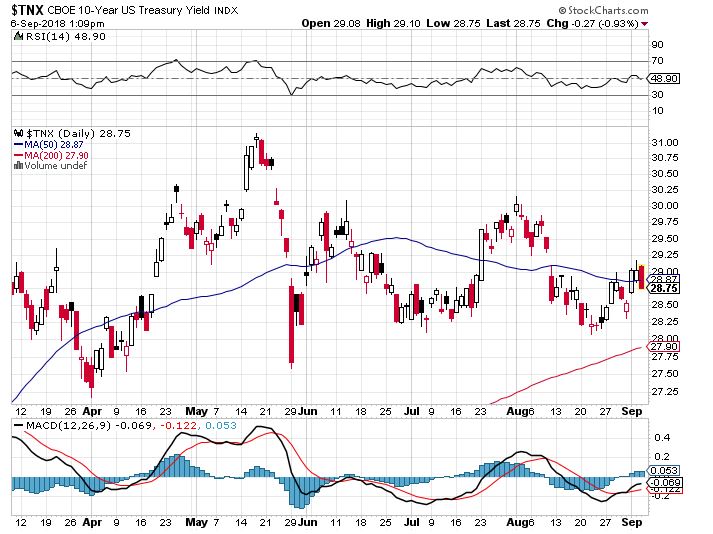Why Bonds Can’t Go Down
The better headline for this story is "If Bonds Can't Go Down Stocks Can't Either."
The U.S. Treasury bond market has suddenly ground to a halt, puzzling traders, investors, and hedge fund managers alike. Last week, the yield on the 10-year Treasury bond traded as low at 2.85%. That is a miniscule 25 basis points higher than they posted nearly two years ago in November 2016. This is despite the U.S. economy delivering a red hot 4.1% Q2 GDP growth rate, a massive tax cut, a huge deregulation push, and corporate profits at all-time highs. After the past three years, S&P 500 earnings have soared from $120 to an expected $170.
If I blindfolded any professional money manager, told him the above and asked him where the 10-year Treasury yield should be, most would come in at around the 5% level. So what gives? I have put a great deal of thought into this and the answer can be distilled down to two letters: QE.
Global quantitative easing has created about $50 trillion in new money over the past 10 years. It has not been spent, it hasn't disappeared, nor has it gone to money heaven. It is still around. The U.S. Federal Reserve, the first to start QE in November 2008, ended it in October 2014. From start to finish it created $4.5 trillion in new money. Over the past four years this has been wound down to $4.2 trillion by letting debt on its balance sheet mature.
Japan actually began its QE program in 2001, long before anyone else, to deal with the aftermath of the 1990 Japanese stock market crash and a massive demographic headwind (they're not making Japanese anymore). Some 17 years later, the Japanese government now owns virtually all of the debt in the country. When you hear about Japan's prodigious 240% debt to GDP ratio, it's nonsense. Net out government holdings and there is no national debt in Japan at all.
After the 2008 crash, the Japanese government expended its QE to include equities as well. As a result, the government is now the largest single buyer of stocks there. As a result, the Nikkei Average has risen by 233% since the 2009 bottom despite a miserable economic performance, and the yield on 10-year JGB's stand at a lowly 0.10%. The European Central Bank got into the QE game very late, not until 2015, and its program continues anew, although at half its peak rate. The ECB has indicated it won't stop creating new money until 2019.
Part of the problem is that the ECB is running out of bonds to buy, as it already owns most of the paper issued by European entities. That's why 10-year German bunds are yielding a paltry 0.32%. As a result, there is excess liquidity everywhere and this has broad implications for your investment or retirement portfolio. It could take as long as a decade before all of this artificial cash is removed from the global financial system.
For a start, bonds may not fall much from here, even if the Fed continues its schedule of 25 basis point rate rises every quarter. Stocks can't fall either with this much cash underpinning the market, at least not for a while and not by much. Some $1 trillion is company buybacks in a $27 trillion market is also a big help.
It also means you can't have a global contagion leading to a financial crisis. There is ample money available to refinance your way out of any problem when 70% of the world's debt is still yielding close to zero. This means that the current Turkish (TUR) crisis is yet another buying opportunity for U.S. stocks, as has every geopolitical crisis of the past decade. And that $82 billion Tesla (TSLA) buyout? No problem. What Wall Street and most stock market pundits missed is that a conventional leverage buyout structure is unnecessary when there are trillions of dollars of cash to be had for the asking.
If two-thirds of the existing shareholders stick around as the company expects, the Saudis chip in $20 billion, and you pick up another $10 billion from other interested parties, the deal is done at $420 a share. Better buy your Tesla stock now. It will be your last chance to get into a potential tenfold increase in value over the next decade. Yes, when the excess free cash runs out in a decade there will be hell to pay. Until then, make hay while the sun shines.






The Diary of a Mad Hedge Fund Trader, published since 2008, has become the top performing trade mentoring and research service in the industry, averaging a 34.84% annual return for ...
more



Wait until the ECB ends their QE.